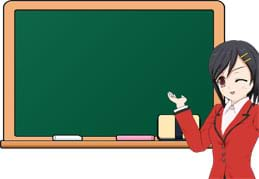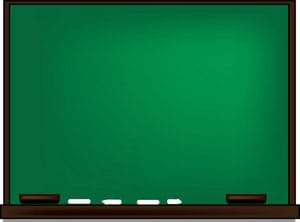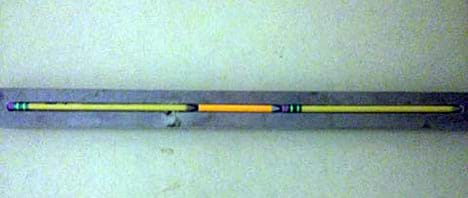Quick Look
Grade Level: 9 (8-10)
Time Required: 1 hour
Expendable Cost/Group: US $0.00
Group Size: 3
Activity Dependency: None
Subject Areas: Algebra, Geometry, Problem Solving
NGSS Performance Expectations:

| HS-ETS1-3 |

Summary
Student groups work with manipulatives—pencils and trays—to maximize various quantities of a system. They work through three linear optimization problems, each with different constraints. After arriving at a solution, they construct mathematical arguments for why their solutions are the best ones before attempting to maximize a different quantity. To conclude, students think of real-world and engineering space optimization examples—a frequently encountered situation in which the limitation is the amount of space available. It is suggested that students conduct this activity before the associated lesson, Linear Programming, although either order is acceptable.Engineering Connection
Engineers sometimes need to optimize a system for a given quantity against one or more constraints. In this activity, the quantity to be maximized is the total length of all the pencils and the constraint is the tray length. Additionally, some engineering problems can be simplified if the spatial dimensions can be reduced from the standard three of our physical world to either two or one. While the pencils and the tray are themselves three-dimensional objects, the pencils can only fit stably inside by aligning their long axes with the tray’s long channel. Recognizing how a complicated problem can be made easier is an important skill for engineers!
Learning Objectives
After this activity, students should be able to:
- Pick the pencils from a pile that enable the greatest number of pencils to fit linearly (single file) in a tray.
- Pick the pencils from a pile that enable the greatest length to fit linearly (single file) in a tray.
- Pick the pencils from a pile that enable the greatest amount to fit linearly (single file) in a tray, given the additional requirement of fixed, nonzero gaps between pencils, including end pencils and walls.
- Explain how linear programming relates to space optimization in engineering design problems.
Educational Standards
Each TeachEngineering lesson or activity is correlated to one or more K-12 science,
technology, engineering or math (STEM) educational standards.
All 100,000+ K-12 STEM standards covered in TeachEngineering are collected, maintained and packaged by the Achievement Standards Network (ASN),
a project of D2L (www.achievementstandards.org).
In the ASN, standards are hierarchically structured: first by source; e.g., by state; within source by type; e.g., science or mathematics;
within type by subtype, then by grade, etc.
Each TeachEngineering lesson or activity is correlated to one or more K-12 science, technology, engineering or math (STEM) educational standards.
All 100,000+ K-12 STEM standards covered in TeachEngineering are collected, maintained and packaged by the Achievement Standards Network (ASN), a project of D2L (www.achievementstandards.org).
In the ASN, standards are hierarchically structured: first by source; e.g., by state; within source by type; e.g., science or mathematics; within type by subtype, then by grade, etc.
NGSS: Next Generation Science Standards - Science
| NGSS Performance Expectation | ||
|---|---|---|
|
HS-ETS1-3. Evaluate a solution to a complex real-world problem based on prioritized criteria and trade-offs that account for a range of constraints, including cost, safety, reliability, and aesthetics, as well as possible social, cultural, and environmental impacts. (Grades 9 - 12) Do you agree with this alignment? |
||
| Click to view other curriculum aligned to this Performance Expectation | ||
| This activity focuses on the following Three Dimensional Learning aspects of NGSS: | ||
| Science & Engineering Practices | Disciplinary Core Ideas | Crosscutting Concepts |
| Evaluate a solution to a complex real-world problem, based on scientific knowledge, student-generated sources of evidence, prioritized criteria, and tradeoff considerations. Alignment agreement: | When evaluating solutions it is important to take into account a range of constraints including cost, safety, reliability and aesthetics and to consider social, cultural and environmental impacts. Alignment agreement: | New technologies can have deep impacts on society and the environment, including some that were not anticipated. Analysis of costs and benefits is a critical aspect of decisions about technology. Alignment agreement: |
Common Core State Standards - Math
-
Apply geometric concepts in modeling situations
(Grades
9 -
12)
More Details
Do you agree with this alignment?
-
Apply geometric methods to solve design problems (e.g., designing an object or structure to satisfy physical constraints or minimize cost; working with typographic grid systems based on ratios).
(Grades
9 -
12)
More Details
Do you agree with this alignment?
International Technology and Engineering Educators Association - Technology
-
Students will develop abilities to use and maintain technological products and systems.
(Grades
K -
12)
More Details
Do you agree with this alignment?
-
Use various approaches to communicate processes and procedures for using, maintaining, and assessing technological products and systems.
(Grades
9 -
12)
More Details
Do you agree with this alignment?
State Standards
Colorado - Math
-
Linear measure, angle measure, area, and volume are fundamentally different and require different units of measure.
(Grade
7)
More Details
Do you agree with this alignment?
Materials List
Each group needs:
- ~20 wooden pencils of varying (but consistent between groups) lengths, such as 7.5 inch (full-length) and 3.5 inch (golf)
- 1 grooved whiteboard-style marker tray that is 18.5 inches long and 0.375-inch wide (this width is preferred for a snug fit with standard wooden pencils); such as a piece of wood with a groove cut into it; the tray can be makeshift as long as the “grooved” condition is met
- 1 large sheet of paper or a small/portion of a whiteboard, on which to work out and then display mathematical arguments
- pencils or whiteboard markers
Pre-Req Knowledge
A familiarity with linear inequalities.
Introduction/Motivation
One common type of engineering problem is optimizing a quantity against a constraint. One example of this is trying to fit as many small objects as possible into a larger container or space. Can anyone think of a situation in which you were trying to cram things into a small space? What sorts of things were you trying to fit into what? (Take ideas from about three volunteers.)

Today, we are going to be doing something very similar. We want to know how many pieces of chalk (or markers) can fit in a chalkboard (or whiteboard) tray. Since we cannot all use the chalkboard tray at the front of the classroom, we’ll use pencils to model the chalk and grooved pieces of wood to model the tray. Specifically, we want the pencils to fit stably inside the grooved piece of wood. This means that we can only align the long axes of the pencils with the groove. Placing the pencils on top of the wood perpendicular to the long groove would leave them unstable and easy to be knocked off. Similarly, attempting to balance the pencils either on their tips or erasers would also leave the pencils in an unstable state. So, we will only place the pencils lengthwise in the groove, and not stacked on top of each other either. (See Figure 1 for an example of what this looks like with chalk, and Figure 2 for an example of what this looks like with pencils.)

What questions do you have about these guidelines? (Answer any questions that arise. At your discretion, use one set of the materials as a visual. Then move on with the activity, as described in the Procedure section.)
Procedure
Before the Activity
- Gather materials.
- Make or makeshift pencil trays for the activity, one per team.
With the Students
- Present to the class the Introduction/Motivation section to introduce the idea of optimizing a quantity against a constraint and introduce the challenge—How many pieces of chalk can fit in a chalkboard tray?—as modeled by the use of pencils and grooved pieces of wood, including a discussion of the problem’s guidelines.
- Answer any questions students might have about the problem’s guidelines.
- Divide the class into groups of three students each. Hand out the materials to each group. Then lead students through three linear optimization examples, as described below.
- Problem 1: Students explore which pencils to choose to enable the greatest number of pencils to fit along the grooved tray. (15 minutes) Tell the students: The first thing I want to know about this system is what combination of short and long pencils enable the greatest number of pencils to fit in the tray. I’m going to give you about 15 minutes to explore this idea. Once you think you have a solution, please construct a mathematical argument for why your solution is optimum. This means that it truly is the solution that uses the greatest number of pencils.
- As students work in groups, walk around and observe. If desired, lead a small discussion about their findings after the 15 minutes are up. Or wait until they complete problem 2 before holding a discussion. Refer to the Assessment section for answers and expectations.
- Problem 2: Students explore which pencils to choose to enable the greatest amount of graphite (pencil length) to fit along the grooved tray. (15 minutes) Tell the students: The next thing I want to consider is what combination of short and long pencils enable the most total pencil length to fit in the tray. Another way of looking at this is the smallest gap of “wasted” space when the pencils are lined up tail to tip. I’m going to give you about 15 minutes to explore this idea. Once you think you have a solution, please construct a mathematical argument for why your solution is optimum. This means that it truly is the solution that provides the greatest total length of pencil.
- As students work in groups, walk around and observe. If desired, lead a small discussion about their findings after the 15 minutes are up.
- Problem 3: Students explore the amount of pencils needed for the smallest gap of “wasted” space when the pencils are lined up tail to tip. (20 minutes) (They must allow for a mandatory gap between all of the pencils, as well as between the end pencils and the wall.) Tell the students: Next, what if I don’t want my graphite or erasers to rub against anything for fear that they may get shorter, and so I require a one-inch gap? In this case, I want you to consider what combination of short and long pencils enable the most total pencil length to fit in the tray assuming that every pencil must be at least 1 inch away from the nearest wall or pencil. This is similar to the last problem in that you want the smallest gap of “wasted” space when the pencils are lined up tail to tip, except now a mandatory gap must be incorporated between all of the pencils, as well as between the end pencils and the wall. I’m going to give you about 20 minutes to explore this idea. Once you think you have a solution, please construct a mathematical argument for why your solution is optimum. This means that it truly is the solution that provides the greatest total length of pencil.
- Tell the students: Each time you have solved this problem today, I gave you a constraint. A constraint is a limitation or restriction on something. In this case, it was the type of spacing of the pencils in the tray. Engineers often need to optimize a system for a given quantity given one or more constraints; they rarely have complete freedom to create whatever they want. Instead, they must adhere to the constraints, or requirements, of the project. One frequently encountered constraint is the amount of space available. In order to fit as much as possible into a small volume, an engineer must optimize the space. This requires knowledge of the dimensions of the space as well as the objects to be placed inside. Today we practiced linear optimization of a space, because we were considering only objects along a line. The optimization of a space gets more complicated if we add a second dimension, as you might when considering a picture or a map, or a third dimension, as you would if you were trying to figure out how many objects fit in a container.
- Discuss how space optimization relates to the real world and to engineering. Specifically, try to get students to come up with a few examples and share any of your own if they are not suggested by students and it appears doing so would help the conversation. Ask the students: Can anyone think of an example of when space optimization might occur in engineering? (Example answers: setting up the interiors of storage units and office buildings, designing spacecraft that fit in the payload fairings (nose cones) of launch vehicles, planning cities within the boundaries of particular plots of land, designing circuit boards that fit inside very slim smartphone, tablet and laptop devices, product placement on grocery store shelves, planning human-made waterways that are big enough to carry the water needed by cities during peak demand, designing engines small enough to fit inside lawnmowers, cars, golf carts, go-karts, and other machines and appliances.)
Vocabulary/Definitions
constraint: A limitation or restriction—something that must be obeyed in solving a problem. A restriction on possible values of x and y.
line segment: A part of a line that is bounded by two distinct end points, and contains every point on the line between its endpoints.
optimize: To select the best solution, with regard to some criterion, from a set of alternatives.
Assessment
Pre-Activity Embedded Assessment
Opening Discussion: As part of the Introduction/Motivation content presentation, kick off the activity topic by asking the class: Can anyone think of a situation in which you were trying to cram things into a small space? What sorts of things were you trying to fit into what?
Activity Embedded Assessment
Pencils in a Tray Problems: This activity walks students through three linear optimization examples, as described in the Procedure section. The constructed mathematical arguments that each group devises for the three problems serve as assessments. Ideally, students come up with the inequality 7.5x + 3.5y <= 18.5 where x is the number of regular pencils and y is the number of golf pencils. Another possibility is that students construct a table with all possible non-negative integer values of x and y that meet the constraint. Regardless of the approach, first look for sound mathematical reasoning, and then the correct answers (x=0, y=5 for problem 1, x=2, y=1 for problem 2 and x=1, y=2 for problem 3).
Post-Activity Assessment
Discussion: Conclude the activity by making real-world connections. Ask the students: Can anyone think of an example when space optimization might occur in engineering? Student examples reveal their understanding of the activity concepts. See a list of examples in the Procedure section.
Activity Extensions
To extend the activity, present the three classes of problem presented in the main activity, but with different numbers. For instance, make the total length of the tray 30 inches and the sizes (x, y) 6 and 8 inches. Answers for this alternate case: problem 1 is (5, 0), problem 2 is either (5, 0) or (1, 3), and problem 3 is (4, 0) with 1 total inch of “wasted space.” In addition, the teacher may want to come up with his/her own problems, which are likely to be paper exercises only since materials of odd dimensions may not be readily available.
Activity Scaling
- For lower grades, remove problem 3, which is the scenario that requires one-inch gaps between pencils.
- For higher grades, after concluding the activity, provide additional versions of the same three problems, but with different numbers, for students to do on paper, as described in the Activity Extensions section.
Subscribe
Get the inside scoop on all things TeachEngineering such as new site features, curriculum updates, video releases, and more by signing up for our newsletter!More Curriculum Like This

Students learn about linear programming (also called linear optimization) to solve engineering design problems. They apply this information to solve two practice engineering design problems related to optimizing materials and cost by graphing inequalities, determining coordinates and equations from ...
Copyright
© 2016 by Regents of the University of ColoradoContributors
Ryan Sullivan; Maia Vadeen; Andi Vicksman; Nathan Coyle; Russell Anderson; Malinda ZarskeSupporting Program
CU Teach Engineering (a STEM licensure pathway), Engineering Plus Degree Program, University of Colorado BoulderAcknowledgements
This activity was developed by CU Teach Engineering, a pathway to STEM licensure through the Engineering Plus degree program in the College of Engineering and Applied Science at the University of Colorado Boulder.
Last modified: May 4, 2017






User Comments & Tips